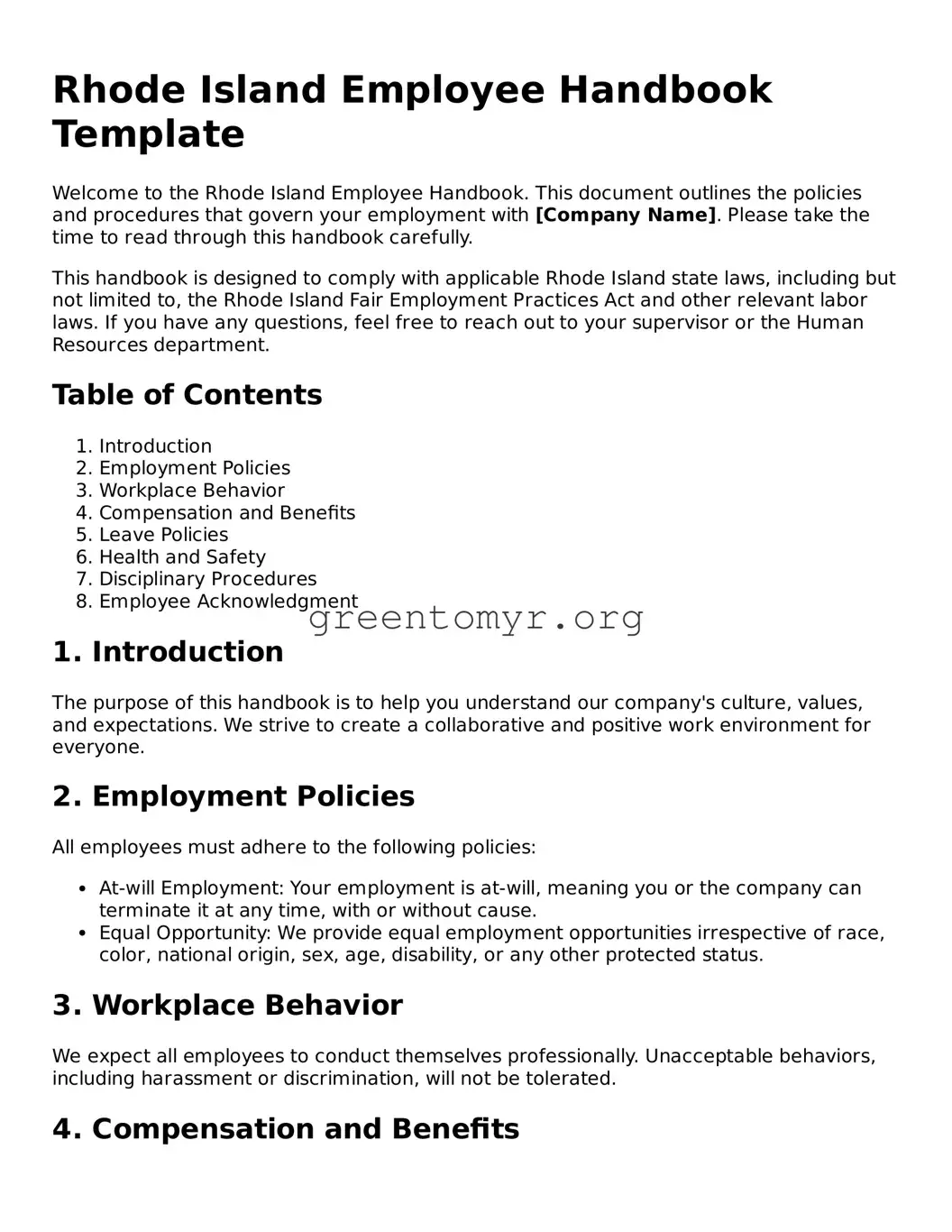Rhode Island Employee Handbook Template
Welcome to the Rhode Island Employee Handbook. This document outlines the policies and procedures that govern your employment with [Company Name]. Please take the time to read through this handbook carefully.
This handbook is designed to comply with applicable Rhode Island state laws, including but not limited to, the Rhode Island Fair Employment Practices Act and other relevant labor laws. If you have any questions, feel free to reach out to your supervisor or the Human Resources department.
Table of Contents
- Introduction
- Employment Policies
- Workplace Behavior
- Compensation and Benefits
- Leave Policies
- Health and Safety
- Disciplinary Procedures
- Employee Acknowledgment
1. Introduction
The purpose of this handbook is to help you understand our company's culture, values, and expectations. We strive to create a collaborative and positive work environment for everyone.
2. Employment Policies
All employees must adhere to the following policies:
- At-will Employment: Your employment is at-will, meaning you or the company can terminate it at any time, with or without cause.
- Equal Opportunity: We provide equal employment opportunities irrespective of race, color, national origin, sex, age, disability, or any other protected status.
3. Workplace Behavior
We expect all employees to conduct themselves professionally. Unacceptable behaviors, including harassment or discrimination, will not be tolerated.
4. Compensation and Benefits
Compensation includes your salary and any benefits provided, such as:
- Health Insurance
- Retirement Plans
- Paid Time Off
- Bonus Opportunities
5. Leave Policies
Employees are entitled to various types of leave:
- Sick Leave
- Vacation Leave
- Family Leave
- Jury Duty Leave
6. Health and Safety
Your health and safety are priorities for us. Follow all safety protocols and report any hazards immediately. Participation in safety training is mandatory.
7. Disciplinary Procedures
Failure to follow company policies may result in disciplinary action. The process can include:
- Verbal Warning
- Written Warning
- Suspension
- Termination
8. Employee Acknowledgment
Please sign below to acknowledge that you have received and understood the Rhode Island Employee Handbook.
Employee Name: [Employee Name]
Signature: [Signature]
Date: [Date]
